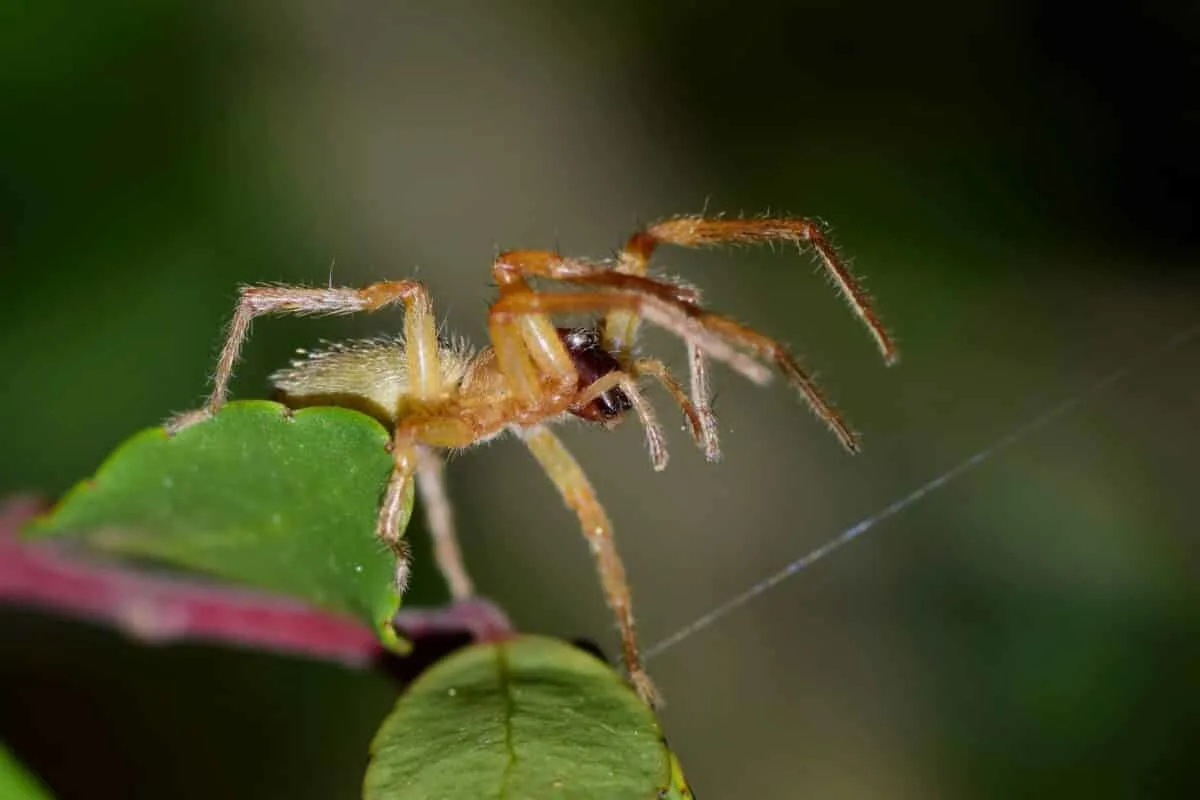Imagine this, you come out of the shower feeling clean and refreshed, and just when you think your day couldn’t get any better, suddenly you see it – a yellow sac spider hanging out on the wall near your sink.
Chances are, if you’ve ever encountered one of these eight-legged creatures before, you already know what to expect: pain! Yep, that’s right; those tiny little critters have earned quite the reputation thanks to their venomous bite that packs enough punch to make even grown adults jump with fear. So don’t be too quick to dismiss something so small – in this case, size doesn’t matter because the threat is real.
In this article, we’ll take an in-depth look at everything from why yellow sac spiders bite humans (spoiler alert: sometimes they don’t!), how dangerous they are, what symptoms could mean that someone has been bitten by one, as well as prevention tips on how best to avoid getting into such sticky (quite literally) situations again in future.
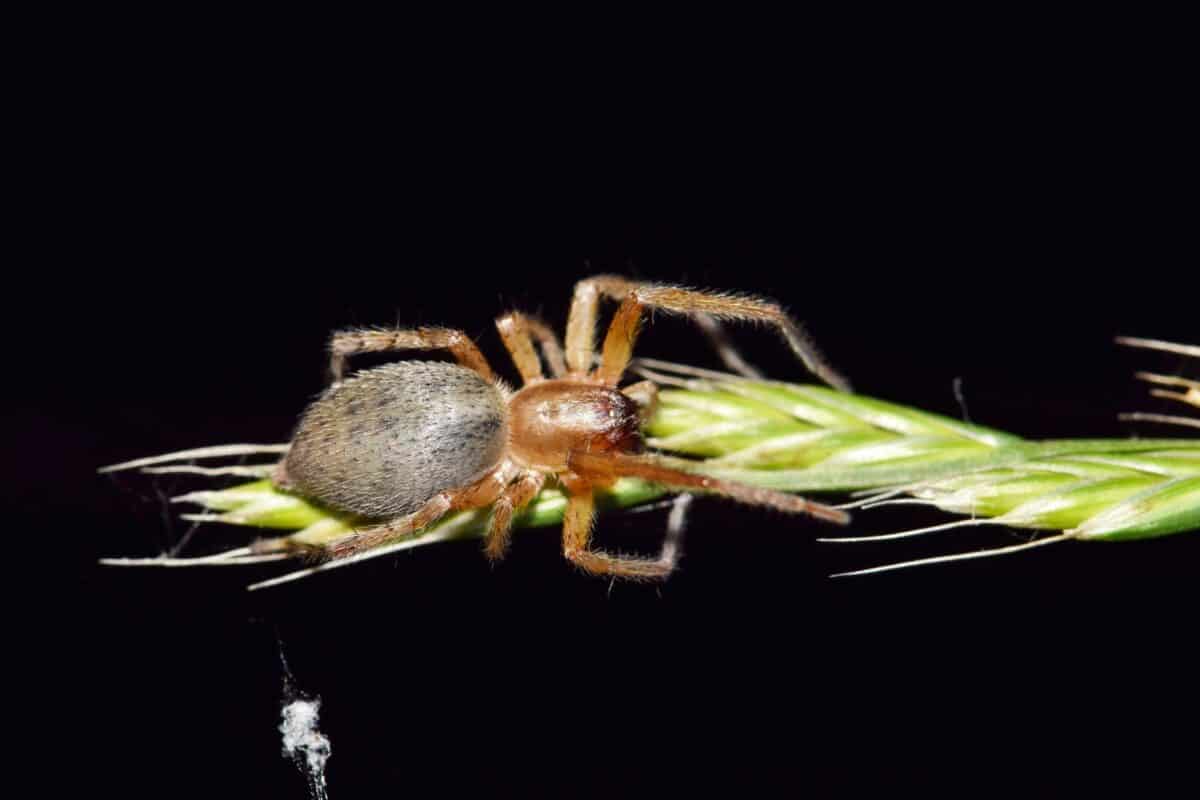
Skip ahead to any section below!
Overview Of The Yellow Sac Spider And Its Behavior
The Yellow Sac spider may not be the most well-known species, but it is a fascinating one nonetheless. This spider, commonly found in North America, gets its name from its characteristic yellow coloring and the shape of its web.
Unlike other spiders, the Yellow Sac spider does not spin a traditional trap. Instead, it creates a sac-like structure in which it sleeps during the day and hunts at night.
Although relatively small, this spider is known for its aggressive behavior, often attacking prey larger than itself.
Additionally, the Yellow Sac spider is also known to bite humans, with its venom causing mild to moderate symptoms. Overall, the Yellow Sac spider may be a lesser-known species, but its unique behavior and distinct appearance make it a fascinating subject of study in the world of arachnology.
Identifying A Yellow Sac Spider Bite
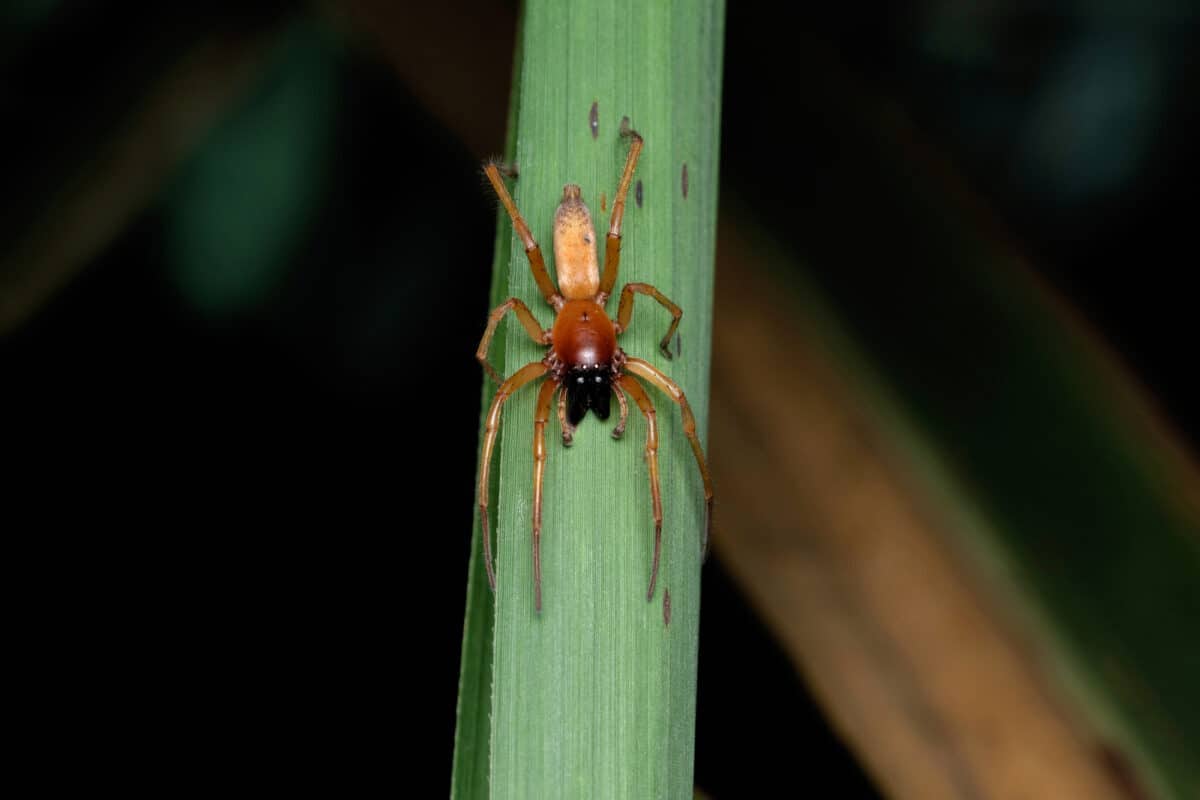
If you are experiencing symptoms such as pain, swelling, or redness after being bitten by a spider, it’s important to identify the type of spider that bit you so you can receive the proper treatment. One common culprit of spider bites is the Yellow Sac Spider. This spider is commonly found indoors and outdoors and typically bites at night when humans are asleep.
The bite is usually painless at first but can develop into a sensitive lesion that is red, swollen, and itchy. If you think a Yellow Sac Spider may have bitten you, it’s important to seek medical attention immediately. As some individuals can have severe reactions that require treatment.
Other symptoms to watch for following a bite include fever, nausea, and muscle pain. By identifying the spider that bites you, you can receive the proper treatment and take steps to prevent future bites.
Check out: What To Do After A Red-Bellied Black Snake Bite.
Symptoms of a Yellow Sac Spider Bite
A bite from a Yellow Sac Spider can be quite painful. Typically, the spider’s taste is not lethal but can result in significant pain and swelling. The most common symptoms of a Yellow Sac Spider bite include a stinging sensation, itching, burning, or redness around the affected area.
Victims may experience nausea, vomiting, or fever in more severe cases. However, these reactions are uncommon and usually occur when an individual is allergic to the spider’s venom. Most people fully recover from a bite with proper treatment within a few days. It’s important to seek medical attention if your symptoms worsen or if you have any concerns.
What To Do If A Yellow Sac Spider Bites Someone
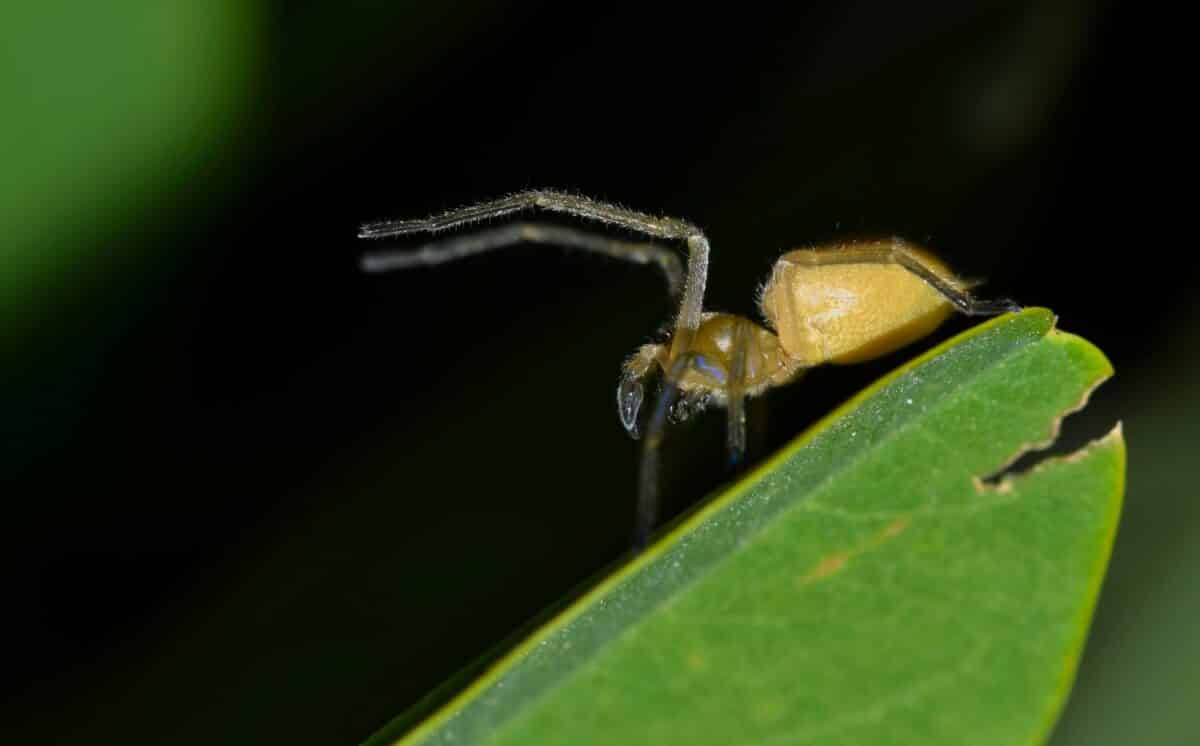
If you suspect a Yellow Sac Spider has bitten someone, acting quickly is important. The venom of these spiders can cause various symptoms, including pain, swelling, redness, and itching.
There may also be more serious symptoms, such as nausea, vomiting, and fever. The first step is to wash the affected area with soap and water. Then apply a cold compress to help reduce swelling.
It’s also important to keep the person calm and still, as movement can spread the venom through the body more quickly. If the symptoms are severe or if the person has an allergic reaction, seek medical attention immediately. Overall, the key is to act quickly and responsibly to ensure the best possible outcome for the person who has been bitten.
Check out: The Northern Pacific Rattlesnake Bite.
Ways to Prevent a Yellow Sac Spider Bite
If you live in an area where Yellow Sac Spiders are common, knowing how to avoid a bite is important.
First and foremost, it’s important to keep your home clean and clutter-free. As these spiders like to nest in dark, secluded areas. Be sure to seal any cracks or crevices in your home to prevent them from entering.
Wear long sleeves and pants when spending time outdoors, and shake out any clothing or shoes before putting them on. Finally, if you encounter a Yellow Sac Spider, try to catch it and release it outside rather than kill it. As this will prevent it from releasing pheromones that may attract more spiders to your home. Taking these precautions can greatly reduce your risk of a Yellow Sac Spider bite.
Check out: Mighty Komodo Dragon Bite.
Treating A Yellow Sac Spider Bite At Home
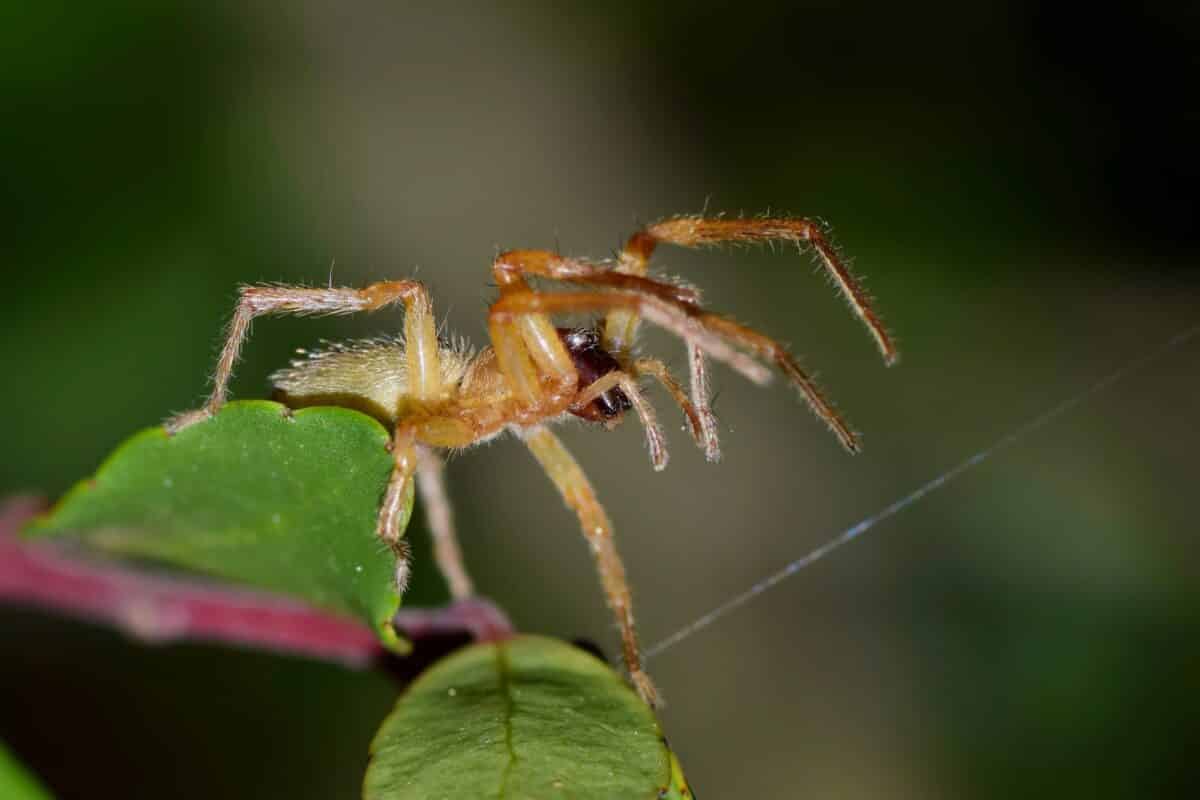
Yellow Sac Spiders are known for their venomous bites that can cause symptoms. This includes sharp pain, swelling, and redness around the bite area. If you find yourself bitten by one of these spiders, you can do a few things at home to alleviate your symptoms.
Firstly, wash the bite area with soap and water to prevent infection. Applying a cold compress to the area can help to reduce swelling and discomfort. Over-the-counter pain relievers such as ibuprofen or acetaminophen can also provide relief.
If your symptoms persist or worsen, it’s important to seek medical attention immediately. While rare, some people may experience an allergic reaction to yellow sac spider bites, which can be life-threatening. By following these tips and being aware of potential complications, you can effectively treat a yellow sac spider bite at home.
Frequently Asked Questions
The Yellow Sac Spider is a common spider found in many regions worldwide, including North America. While their bites are venomous, they are typically not dangerous to humans.
Furthermore, the venom may cause localized pain, redness, and swelling, similar to a bee sting, and usually resolves independently within a few days. However, in rare cases, some individuals may experience a more severe reaction, and it’s essential to seek medical attention if you notice any concerning symptoms.
Identifying a Yellow Sac Spider bite can be challenging, as it often looks like a small, red, and slightly swollen lesion. The bite may cause mild pain and irritation, but it usually lacks the classic “bullseye” appearance commonly associated with other spider bites like the Brown Recluse.
If you suspect a Yellow Sac Spider has bitten you, it’s best to observe the bite site for any changes and keep it clean to prevent infection.
If a Yellow Sac Spider has bitten you, there are several steps you can take:
Clean the area:
And wash the bite site gently with soap and water to reduce the risk of infection.
Apply a cold compress:
To alleviate pain and swelling, apply a cold pack wrapped in a thin cloth to the bite area for 10-15 minutes.
Seek medical attention if necessary:
If you experience severe pain, a rapidly spreading rash, difficulty breathing, dizziness, or other concerning symptoms, it’s crucial to seek medical help immediately.
Key Points
| This spider, commonly found in North America, gets its name from its characteristic yellow coloring and the shape of its web. |
| If you suspect a Yellow Sac Spider has bitten you, it’s best to observe the bite site for any changes and keep it clean to prevent infection. |
| Yellow Sac spiders are known for their venomous bites that can cause symptoms, including sharp pain, swelling, and redness around the bite area. |
| The venom may cause localized pain, redness, and swelling, similar to a bee sting, and usually resolves independently within a few days. |
| The bite may cause mild pain and irritation, but it usually lacks the classic “bullseye” appearance commonly associated with other spider bites like the Brown Recluse. |
| The most common symptoms of a Yellow Sac Spider bite include a stinging sensation, itching, burning, or redness around the affected area. |
Wrapping Up
The yellow sac spider can be quite a nuisance to humans. Its venomous bite can often cause burning sensations and pain lasting up to several hours or even days, depending on the individual’s sensitivity.
However, developing more serious symptoms such as severe allergic reactions, infection at the bite site, or even systemic symptoms is rare. To decrease the risk of being bitten by a yellow sac spider, one should wear gloves when gardening and perform routine home inspections and maintenance of dark places around windows and doors to discourage spiders from entering your home.
In conclusion, if you suspect a yellow sac spider has bitten you, it is best to seek medical attention immediately for proper diagnosis and appropriate treatment.
If you enjoyed this article as much as me, check out our related article links below!
Next up:
- Washington’s Western Rattlesnake
- Discover San Francisco’s Most Dangerous Animals
- Unearth the Reality of Florida’s Venomous Spiders
- Great White Shark Vs. Bull Shark
- Michael Phelps Vs. Dolphin: A Race For Aquatic Supremacy
- Eagle’s Aerial Acrobatics: The Hawk Becomes The Hunted
Join our Forum for free today!

- Huge Pet Bison Breaks Into House - July 22, 2024
- Giant Black Bear Surprises Beachgoers by Emerging from the Ocean in Florida - July 22, 2024
- Brave Man Plays Instrument While Huge Bear Caresses His Shoulder - July 22, 2024

